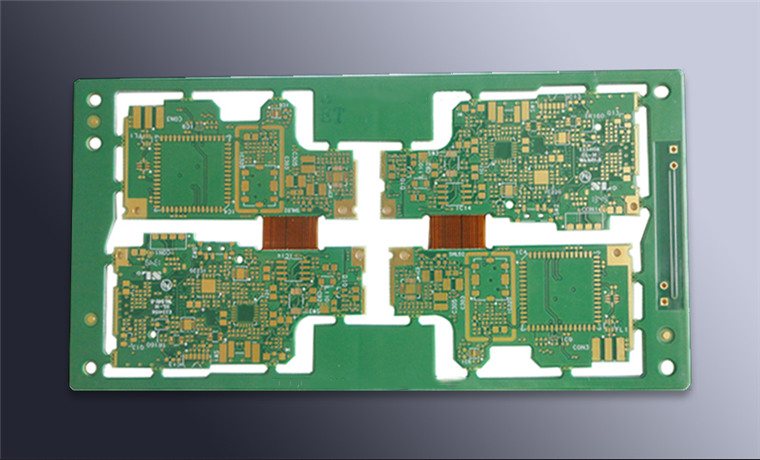PCB生產 過程 flow is different and changing with the progress and difference of PCB type (type) and process technology. 同時, 由於PCB製造商採用不同的工藝科技,囙此情况有所不同. 不同的生產工藝和科技可用於生產相同或類似的PCB產品. 傳統生產工藝單一, 雙重的, 多層板仍然是 PCB生產 process.

1、印刷電路板。 用轉印紙列印出繪製的電路板,注意面向您的光滑面,一般列印兩塊電路板,即在一張紙上列印兩塊電路板。 在其中選擇列印效果最好的電路板。
2. 切割覆銅板,用感光板製作電路板的全過程圖. 覆銅板, 那就是, 兩側覆蓋有銅膜的電路板, 將覆銅板切割至電路板的尺寸, 不太大,無法節省資料.
3. 覆銅板的預處理. 使用細砂紙打磨掉覆銅板表面的氧化層,以確保在轉移電路板時,熱轉印紙上的碳粉能够牢固地印刷在覆銅板上. 打磨標準為板面光亮無明顯污漬.
4. 傳輸電路板. 將印刷電路板切割至合適的尺寸, 將印刷電路板粘貼在覆銅板上. 對齊後, 將覆銅板放入熱轉印機中. 確保轉印紙沒有錯位. 通常地, 2-3次轉移後, 電路板可以牢固地轉移到覆銅板上. 傳熱機已提前預熱, 溫度設定在160-200攝氏度. 由於高溫, 操作時注意安全!

5、腐蝕電路板、回流焊機。 首先檢查印刷電路板是否完全轉移。 如果有幾個區域尚未轉移,請使用黑色油基筆進行維修。 那麼它就會被腐蝕。 當電路板上裸露的銅膜完全腐蝕時,將電路板從腐蝕溶液中取出並清洗,從而腐蝕電路板。 腐蝕溶液的成分為濃鹽酸、濃過氧化氫和水,比例為1:2:3。 配製腐蝕性溶液時,應先放水,再加入濃鹽酸和濃過氧化氫。 如果濃鹽酸、濃過氧化氫或腐蝕性溶液不小心濺到皮膚或衣服上,應及時用清水沖洗。 由於使用的是强腐蝕性溶液,請注意操作過程中的安全!
6. 電路板鑽孔. 電路板需要插入電子元件, 囙此,有必要對電路板進行鑽孔. 根據電子元件引脚的厚度選擇不同的鑽頭. 使用鑽頭鑽孔時, 電路板必須壓緊. 鑽孔速度不能太慢. 請仔細觀察操作員的操作.
7. 電路板預處理. 鑽孔後, 使用細砂紙打磨掉電路板上的碳粉, 並用水清洗電路板. 水幹後, 在電路側面塗抹松香. 為了加速松香的固化, 我們用熱風機加熱電路板, 松香可以在2-3分鐘內凝固. 8. 焊接電子元件. 將電子元件焊接在電路板上後, 打開電源. PCB single-sided production process
a. Cut the copper clad laminate; (cut the copper clad board, 注意切割規格, and bake the board before cutting);
b. Grinding the plate; (clean the cut copper clad laminate in the plate grinding machine so that the surface is free of dust, 毛刺等雜物. The two processes are integrated);
c. Printed circuit; (print the circuit diagram on the side with copper skin, the ink has anti-corrosion effect)
d. Inspection; (remove the excess ink, 在未列印墨水的地方添加墨水, 如果發現大量缺陷, 需要進行調整, 不良品可放置在蝕刻第二步進行油墨清洗, and can be returned to this channel after cleaning Process reprocessing)
e. The ink is ready to dry;
f. Etching; (use the reagent to corrode the excess copper skin, 而電路上的銅皮與油墨可以保持一致, 然後用試劑清潔電路上的墨水,然後乾燥, these three processes are integrated)
g. Drill positioning holes; (drill positioning holes on the 等hed board)
h. Grind the board; (clean and dry the board with the positioning hole drilled, the same as the 2 board)
i. Silk screen; (print plug-in component silk screen on the back of the substrate, 一些標記程式碼, 絲網印刷後乾燥, the two processes are integrated)
j. Grinding plate; (clean again)
k. Solder resist; (screen printing green oil solder resist on the cleaned substrate, 襯墊處不需要綠色機油, 列印後直接乾燥, the two processes are integrated)
l. Forming; (Use a punch to form. 如果不需要V型坑處理, 可分兩次成型. 例如, 小圓板, 首先從絲網印刷表面到阻焊板表面沖孔成小圓板, 然後從焊料掩模表面沖孔至絲網印刷表面插孔, etc.)
m. V-pit; (small circular plates do not need V-pit processing, use the machine to cut the substrate out of the board slot)
n. Rosin; (grind the board first, 清理基板灰塵, 然後乾燥, 然後在墊子側面塗一薄層松香, these three processes are integrated)
o. FQC inspection; (inspect whether the substrate is deformed, whether the hole position and circuit are good products)
p. Flattening; (flattening the deformed substrate, and this process is not required to flatten the substrate)
q. 包裝和運輸.
備註:絲網和阻焊板之間的研磨過程可以省略. 你可以先焊接掩模,然後是絲網, 取決於基板的情况. Single-panel process: cutting - drilling - circuit - solder mask - character (or carbon oil) - spray tin or immersion gold/電金-成型-成品檢驗-包裝-裝運.
Double panel process: cutting - drilling - electroplating - circuit - solder mask - character (or carbon oil) - spray tin or immersion gold/電金-成型-成品檢驗-包裝-裝運. Multi-layer board process: cutting - inner layer - pressing - drilling - electroplating - circuit - solder mask - character (or carbon oil) - spray tin or immersion gold/電金-成型-成品檢驗-包裝-裝運. 轉到Internet收集, 關於這個問題我已經貼了很多次了.